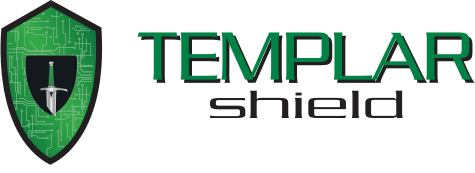
Secure, Compliant, and Connected Across the Healthcare Ecosystem
In today’s highly regulated and patient-centric landscape, healthcare providers, payers, and life sciences organizations face mounting pressures to protect sensitive data, maintain uninterrupted services, ensure regulatory compliance, and drive innovation without compromising security or trust. These industries are united by several critical priorities:
- Safeguarding Protected Health Information (PHI) and intellectual property
- Complying with complex and evolving regulatory requirements
- Achieving operational efficiency and continuity across distributed systems
- Enhancing patient outcomes and stakeholder trust through digital transformation
- Mitigating third-party risks across vast clinical, research, and supply chain ecosystems
Secure, Compliant, and Connected Across the Healthcare Ecosystem
In today’s highly regulated and patient-centric landscape, healthcare providers, payers, and life sciences organizations face mounting pressures to protect sensitive data, maintain uninterrupted services, ensure regulatory compliance, and drive innovation without compromising security or trust. These industries are united by several critical priorities:
Healthcare Providers (Hospitals, Health Systems, Clinics)

Primary Risks & Threat Landscape
Healthcare providers are top targets for cybercrime—especially ransomware. Hospitals and clinics hold large volumes of PHI, financial records, and biomedical device data, making them high-value and highly vulnerable. Downtime due to cyberattacks can result in delayed care, clinical risk, and regulatory penalties. Providers also face risks tied to aging infrastructure, interoperability gaps, and biomedical device vulnerabilities.
Key Compliance Mandates
- HIPAA (Health Insurance Portability and Accountability Act) – governs privacy, security, and breach notification of PHI
- HITECH Act – expands HIPAA with stricter enforcement and breach penalties
- Joint Commission Standards – mandates compliance in clinical operations and IT systems
- CMS and state health regulations – impact reimbursement, access, and technology use
Templar Shield’s ServiceNow implementations enable policy automation, audit readiness, and real-time visibility into compliance status across these frameworks.
Asset Management Needs
Hospitals manage a hybrid landscape of IT and OT assets, including EMR systems, diagnostic imaging machines, infusion pumps, lab instruments, and mobile devices. Accurate inventories of biomedical assets, clinical IoT devices, and cloud applications are essential to ensure patching, maintenance, and risk mitigation. ServiceNow provides a centralized CMDB enriched with security context—configured by Templar Shield to support asset ownership, criticality, and lifecycle tracking.
Core Business Drivers
- Patient Safety & Trust – minimizing clinical downtime and cyber risk to safeguard care delivery
- Regulatory Readiness – ensuring compliance without straining clinical or IT teams
- Operational Efficiency – reducing manual audits and duplicative processes
- Clinical Resilience – maintaining continuity in the face of cyber events or disasters

Payers (Health Insurance & Managed Care Organizations)

Primary Risks & Threat Landscape
Health insurance providers face high stakes for data security, claims fraud prevention, and regulatory reporting. They manage vast stores of PHI, financial data, and member demographics across multiple platforms. As digital member experiences expand, so does the attack surface—exposing payer systems to credential theft, ransomware, and insider threats. Regulatory scrutiny continues to increase, especially around data sharing, AI-driven decisioning, and interoperability mandates under CMS.
Key Compliance Mandates
- HIPAA & HITECH – apply to all payer systems handling PHI
- CMS Rules (e.g., Interoperability and Patient Access) – mandate real-time data access for members and providers
- NAIC Model Laws & State Department of Insurance Rules – govern data protection and audit readiness
- IRS 1075 – applies to payers handling Federal Tax Information (FTI)
Templar Shield helps payers manage complex crosswalks between HIPAA, CMS, and IRS frameworks via ServiceNow’s unified compliance hub.
Asset Management Needs
Payers operate complex infrastructures—including call centers, claims platforms, analytics engines, and member portals—often spread across on-prem and multi-cloud environments. Asset management must extend to virtual systems, third-party integrations, and AI tools (e.g., used in prior authorization or fraud analytics). Templar Shield configures ServiceNow to align CMDB and application inventory with risk scores, ownership, and compliance mapping—empowering payer IT and compliance teams with complete, real-time visibility.
Core Business Drivers
- Member Experience – ensuring secure, seamless, always-available access to care and information
- Compliance Simplification – automating controls and evidence across multiple frameworks
- Fraud Prevention – improving anomaly detection and audit traceability
- Scalable Operations – consolidating legacy systems and reducing process overhead

Life Sciences (Pharma, Biotech, Medical Devices, Research)

Primary Risks & Threat Landscape
Life sciences firms operate in a high-stakes environment where intellectual property, clinical trial data, and regulated manufacturing processes must be protected at all costs. Risks include IP theft, supply chain disruptions, laboratory system vulnerabilities, and non-compliance with global regulations. With the growth of AI in R&D, and digital therapeutics, new risks arise around model transparency, data integrity, and GxP validation.
Key Compliance Mandates
- FDA 21 CFR Part 11 – governs electronic records and signatures
- ICH Q9/Q10 – applies to risk and quality systems in drug development
- GAMP 5 / GxP (Good Practice) Guidelines – cover system validation in pharma and medtech
- EMA, MHRA, and global regulators – require ongoing control evidence for submissions
- Templar Shield helps life sciences clients use ServiceNow to manage global audit trails, CAPAs, and validation workflows in a fully traceable, compliant manner.
Asset Management Needs
R&D environments are rich with high-value assets—from LIMS and ELN systems to cloud-hosted analytics and instrument-connected AI tools. Manufacturers must also manage GMP systems, validated software, cleanroom IoT, and robotic process automation. Templar Shield deploys ServiceNow to provide validation-ready asset visibility, linking systems to control records, risk ratings, and change logs—critical for FDA readiness and internal QMS alignment.
Core Business Drivers
- Innovation Velocity – accelerating development while meeting all regulatory and cybersecurity requirements
- Regulatory Approval Readiness – centralizing audit logs and system traceability for faster submissions
- IP and Data Protection – securing sensitive formulae, trial data, and algorithms from threat actors
- Global Scalability – harmonizing risk and compliance across global labs, factories, and affiliates


Partner with Templar Shield: Secure Innovation Across the Health Ecosystem
Whether you're delivering direct care, managing millions of members, or developing breakthrough therapeutics—Templar Shield’s ServiceNow solutions empower your teams to innovate securely and compliantly. With deep experience in HIPAA, FDA, GxP, CMS, and international health compliance, we bring the governance foundation that today’s digital health ecosystem demands.
Contact us today to schedule a personalized ServiceNow consultation and learn how Templar Shield can help transform your governance, risk, and compliance operations across healthcare, payer, and life sciences environments.


